Skunkbush sumac (
Rhus trilobata), a durable sumac native to the western U.S., stars in late winter and early spring. Tight clusters of tiny sweet-scented flowers open before those of most other plants, providing food for early flying pollinators. Drought-tolerant and long-lived, skunkbush sumac also lights up the garden in fall, when its three-parted leaves blaze in shades from orange to red. Songbirds gobble up the fuzzy fruits in winter. Its natural mounding form can be trimmed into a formal hedge or left rounded.
Not from the western U.S.?: Browse plants native to other regions of the U.S.
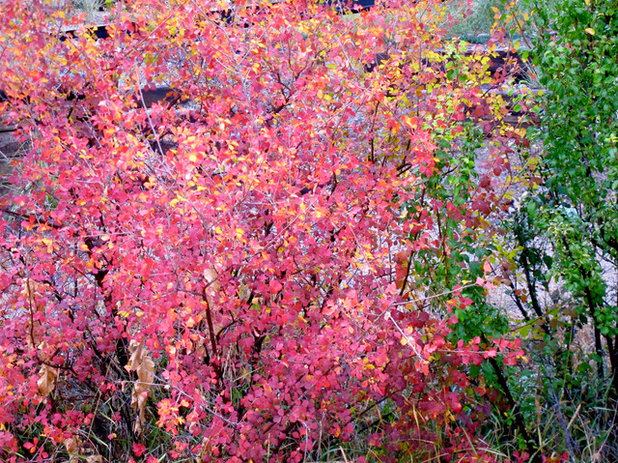
Susan J Tweit
Botanical name: Rhus trilobataCommon names: Skunkbush sumac, skunkbush, lemonade bush, fragrant sumac, squawbush
Origin: Native to the plains, intermountain basins and mountain foothills from Alberta, Canada, to northern Mexico, and from the Pacific Coast states east to the Dakotas, Arkansas and Texas
Where it will grow: Hardy to minus 40 degrees Fahrenheit, or minus 40 degrees Celsius (USDA zones 2b to 9; find your zone)
Water requirement: Extremely drought-tolerant once established
Light requirement: Full sun to light shade
Mature size: Up to 5 feet tall and 8 feet wide
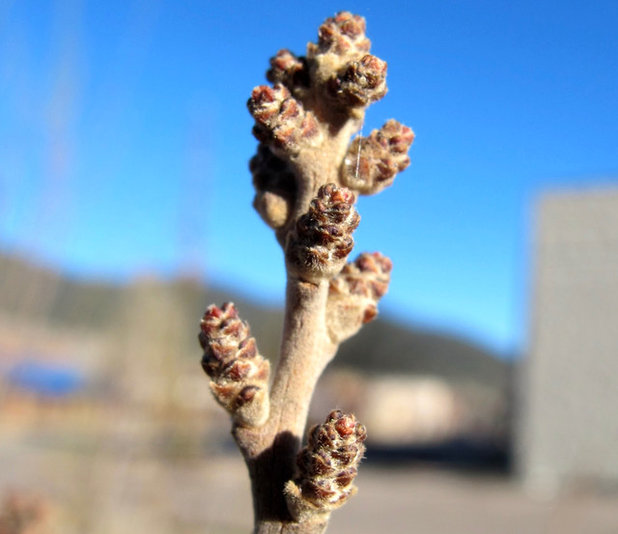
Susan J Tweit
Benefits and tolerances: Extremely drought-tolerant; fragrant spring flowers that attract pollinators; spectacular fall leaf color; provider of cover, nest habitat and food for quail, songbirds and other small wildlife
Seasonal interest: Late-winter and early-spring blooms; glorious fall color; deciduous with winter interest from sturdy gray stems and strong angled branching
When to plant: Late summer and fall
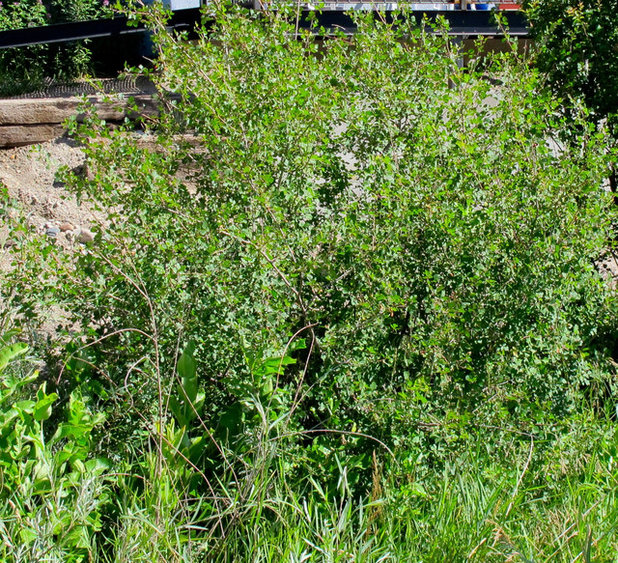
Susan J Tweit
Distinguishing traits. Unlike the sumacs of wetter climates, skunkbush sumac’s
leaves are only 1 to 3 inches across and clustered in threes, hence the species name, which means “three-lobed.” They do share their relatives’ tendency to turn brilliant orange to scarlet in fall.
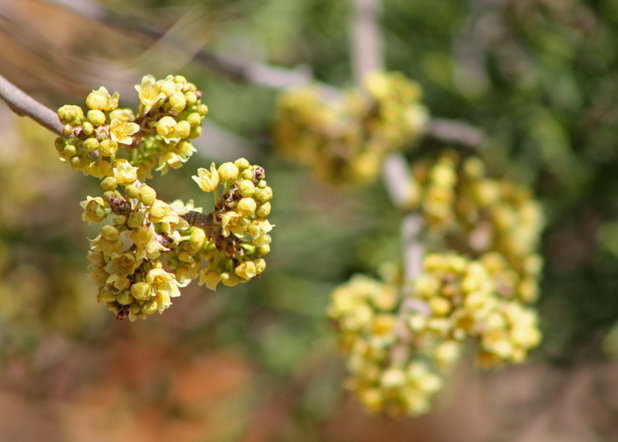
Early-blooming flower clusters sprout at the branch tips, appearing as early as late January or early February in the southern parts of this sumac’s range. Flowers open into tiny ivory to pale yellow blossoms, with a faintly sweet scent that attracts pollinators seemingly out of thin air. Native bees in particular are drawn to the shrub because it blooms so early. Because of that, it’s a crucial pollinator plant.
The branches and the leafy litter under skunkbush sumac also provide critical nesting habitat for native bees.
Photo by the National Park Service of the Petrified ForestGardening for the Bees, and Why It’s a Good Thing
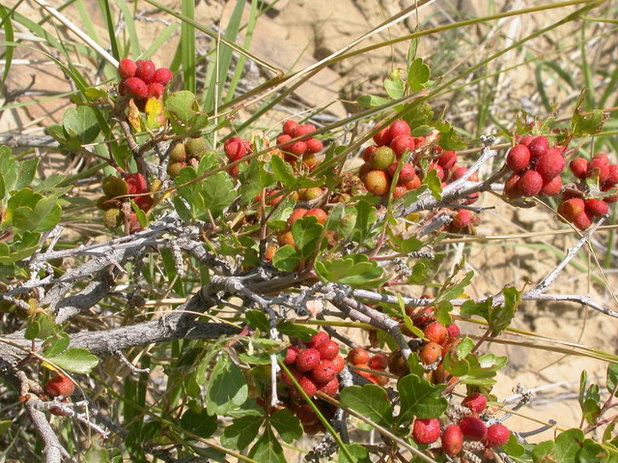
The shrub’s flowers mature into fuzzy and slightly sticky reddish-brown fruits that are high in vitamin C and antioxidants, and appeal to songbirds, chipmunks and other wildlife.
The fruits can be steeped in water to produce a tart drink reminiscent of lemonade, hence its popular name of lemonade bush. All parts of the shrub have been used medicinally by Native Americans and European settlers: The bark was peeled and chewed for a cold remedy, the fruits were chewed to relieve toothaches, and a tea made from the boiled leaves served as a diuretic.
How to use it. To provide cover for small birds, plant skunkbush sumac as a drift of several shrubs in a sunny area where it can spread — it suckers, sending up new sprouts from its roots. Plant it as a single shrub against a fence or wall for a spot of fall color. Skunkbush sumac is also excellent for a mounding ground cover or erosion control on steep banks, especially on hot south- and west-facing slopes.
Photo by Matt Lavin
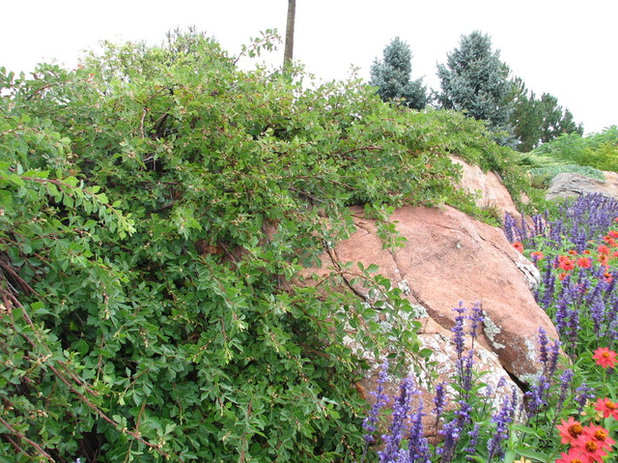
Plant Select®
Planting notes. Plant in late summer or early fall while the soil is still warm enough to promote root growth. Skunkbush sumac thrives in well-drained, sandy or loamy soils but will tolerate clay. Don’t enrich the soil — this native shrub does best when the soil is lean. It doesn’t need supplemental water once established. In fact, too much water will cause root rot and kill the plant.
Selected cultivar. R. trilobata ‘Autumn Amber’ is a low-growing cultivar from New Mexico released by Plant Select. It’s ideal for draping over retaining walls and boulders, or serving as a shrubby ground cover. It tops out at 10 to 14 inches tall by about 6 feet wide. Since it’s from the southern range of the species, it’s a little less cold-tolerant, doing best in zones 4 to 8.





